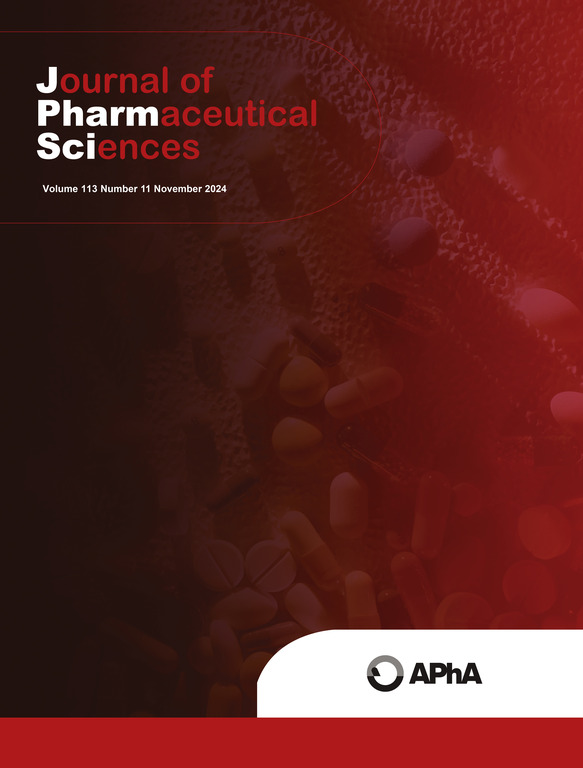Simultaneous XRD-DSC identifies correct drug-polymer solubility and miscibility for enantiotropic solid forms
IF 3.7
3区 医学
Q2 CHEMISTRY, MEDICINAL
引用次数: 0
Abstract
Thermodynamic properties, including solubility and miscibility, which are highly correlated with amorphous solid dispersion physical stability were identified for the complex solid forms of bromopropamide using simultaneous X-ray diffraction (XRD)-differential scanning calorimetry (DSC). The most stable solid form of bromopropamide was crystallized and its crystal structure was solved. The crystallized material was characterized using simultaneous XRD-DSC measurements, which allowed dual analyses of a single sample. Transitions of bromopropamide during heating resulted in observation of the unique diffraction patterns of its different solid forms. The dissolution endpoint (Tend) was measured for various mixtures of bromopropamide and polyvinylpyrrolidone-vinyl acetate random copolymer (PVPVA). The use of XRD-DSC allowed confident and accurate measurements of the Tend for a large range of compositions, assisting in the estimation of drug-polymer solubility and miscibility. Thermodynamic properties identified using combined XRD-DSC were further compared to those obtained using only DSC data. It was found that DSC data in isolation can lead to ambiguity, misinterpretations, and incorrect conclusions, especially for a solid demonstrating multiple, closely related forms.
同时 XRD-DSC 确定药物-聚合物的正确溶解度和各向异性固体形式的混溶性。
利用 X 射线衍射(XRD)-差示扫描量热仪(DSC)同时测定了溴丙酰胺复杂固态的热力学性质,包括溶解度和混溶性,这些性质与无定形固体分散体的物理稳定性高度相关。对最稳定的溴丙酰胺固体形式进行了结晶,并解决了其晶体结构问题。利用同时进行的 XRD-DSC 测量对结晶材料进行了表征,从而实现了对单一样品的双重分析。通过观察溴丙酰胺在加热过程中的转变,可以观察到其不同固体形态的独特衍射图样。对溴丙酰胺和聚乙烯吡咯烷酮-醋酸乙烯无规共聚物的各种混合物的溶解终点(Tend)进行了测量。使用 XRD-DSC 可以对多种成分的 Tend 进行可靠而准确的测量,有助于估算药物-聚合物的溶解度和混溶性。使用 XRD-DSC 组合确定的热力学特性与仅使用 DSC 数据获得的特性进行了进一步比较。研究发现,单独使用 DSC 数据可能会导致模糊、误解和错误结论,尤其是对于表现出多种密切相关形式的固体。
本文章由计算机程序翻译,如有差异,请以英文原文为准。
求助全文
约1分钟内获得全文
求助全文
来源期刊
CiteScore
7.30
自引率
13.20%
发文量
367
审稿时长
33 days
期刊介绍:
The Journal of Pharmaceutical Sciences will publish original research papers, original research notes, invited topical reviews (including Minireviews), and editorial commentary and news. The area of focus shall be concepts in basic pharmaceutical science and such topics as chemical processing of pharmaceuticals, including crystallization, lyophilization, chemical stability of drugs, pharmacokinetics, biopharmaceutics, pharmacodynamics, pro-drug developments, metabolic disposition of bioactive agents, dosage form design, protein-peptide chemistry and biotechnology specifically as these relate to pharmaceutical technology, and targeted drug delivery.

 求助内容:
求助内容: 应助结果提醒方式:
应助结果提醒方式:


